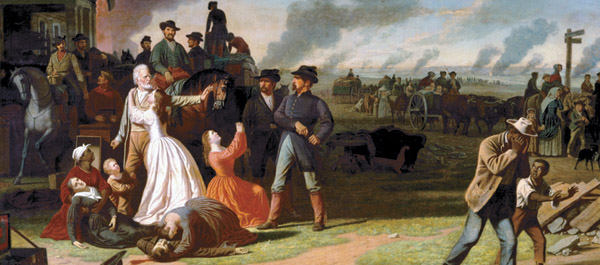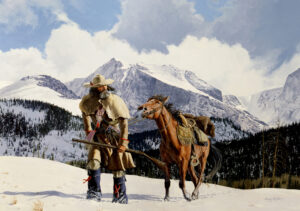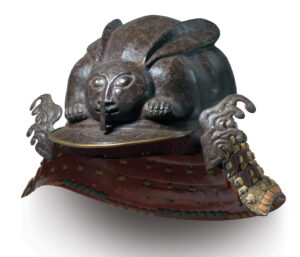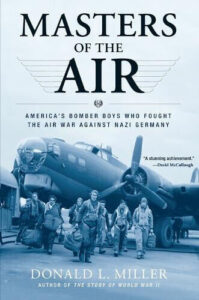To Bingham’s shock, newspaper editors, ministers, and art critics lambasted the painting for denigrating the victorious Union troops and sympathizing with the South
George Caleb Bingham’s painterly protest against martial law on the Kansas-Missouri border backfired. By the time Confederate forces opened their bombardment of Fort Sumter in 1861, western Missouri and eastern Kansas had already been at war for seven bloody years. Paramilitary bands from both states were regularly raiding across the border, stealing livestock, robbing stagecoaches, burning towns, and lynching political opponents.
The violence grew worse after the declaration of war in 1861. Pro-slavery Southerners known as “border ruffians” relied on sympathizers in Missouri for supplies and safe haven. Abolitionist Kansan raiders, called “jayhawkers,” enjoyed semiofficial status as the enforcement arm of Kansas senator James H. Lane, a de facto regional warlord.
In June 1863, the U.S. government appointed Brigadier General Thomas Ewing Jr. commander of the Department of Missouri with instructions to bring an end to the guerrilla warfare. Despite protests from politicians in both states, he arrested the most violent of the jayhawkers and known Southern sympathizers. At first, his measures seemed to work. An August 18 editorial in the Leavenworth Daily Times was optimistic: “We believe the time is not far distant when everything will become peaceful…on this border.”
The prospect of peace did not last long. On August 21, the border ruffians known as Quantrill’s Raiders—led by the notorious William Quantrill—attacked Lawrence, Kansas, at dawn, killing more than 150 men and burning 185 buildings. Four days later, Ewing issued General Order No. 11, which was designed to cut off civilian support to Confederate guerrillas. He gave residents of Missouri’s four westernmost counties just a fortnight to evacuate their towns. Cavalry troops from Kansas enforced the order; jayhawkers looted and burned everything left behind. By mid-September, the region was a wasteland.
A Presbyterian minister who visited the area two years later reported that it was still “like a vast cemetery”; “only stone and brick chimneys remained” of what had been thriving farms.
Kansas residents praised Order No. 11 for curbing guerrilla raids by Southern sympathizers, but the order was unpopular on the other side of the border. Ewing’s most outspoken opponent was Missouri’s state treasurer, the painter George Caleb Bingham. Bingham had already butted heads with Ewing when the general commandeered a building in Kansas City owned by the artist’s mother-in-law. Now Bingham used the authority of his office to pressure Ewing to rescind the order, which he described as “licensed robbery.” When Ewing refused, Bingham swore he would make the general “infamous with pen and brush as far as I am able.”
Born in 1811, Bingham grew up along the Missouri River in the town of Franklin, the westernmost settlement in the Missouri Territory. Inspired to take up painting by a childhood encounter with itinerant portraitist Chester Harding, he taught himself to paint with what he later described as “such colors as a house-painter’s shop could supply, and a half dozen stumps of brushes left by a transient artist in a neighboring town.” In 1832, after a brief apprenticeship as a cabinetmaker, Bingham followed Harding’s example and began a successful career as an itinerant portrait painter, working first in Missouri and later in Washington, D.C., and Philadelphia.
In 1845, Bingham returned to Missouri, where he became active in the Whig party and entered the most important and productive period of his artistic career. Although portraits remained his main source of income, he also painted scenes of everyday life along the Missouri and Mississippi Rivers. Bingham earned a national reputation as a chronicler of the frontier when the influential American Art-Union produced a lithograph of The Jolly Flatboatmen (1846).
Shortly after the war’s end, Bingham began work on Civil War: as realized in the Desolation of Border Counties of Missouri during the operation of “General Order No. 11,” issued by Brigadier General Ewing, from his Head Quarters, Kansas City, August 25, 1863 (1865–1870). Commonly known as Order No. 11, the painting was Bingham’s last major work, intended both as a political tract illustrating the evils of martial law and as a weapon in his personal vendetta against General Ewing.
The sputtering vitriol of Bingham’s title is reflected in the painting. The flowing line and carefully observed characters that marked his earlier work are gone. As one critic describes it, Bingham seems to have painted the work with a clenched fist.
Also unlike his earlier paintings, in which character types are more important than narrative, Order No. 11 tells a melodramatic story, complete with theatrical lighting and overacting.
The canvas is divided into two sections. A tightly packed pyramid of figures dominates the left side. A young man has been shot by a Union soldier, who is holstering his gun. The victim’s wife weeps over his body. Above them, spotlighted by the contrast of light and shadow, the young man’s white-haired father protests the actions of the Union soldiers while his daughter and grandson attempt to restrain him. The victim’s mother has fainted into the arms of a black slave. Another daughter begs the soldiers for mercy. Behind this vignette, figures that Bingham described as “the myrmidons of Kansas aided by their criminal allies in Federal uniform” load rugs and furniture looted from the house into waiting carts.
The father’s outthrust arm directs a viewer’s eye to the right side of the canvas, where a line of faceless refugees drives away with the few possessions they’ve been able to save. A convenient signpost tells us they are headed toward Lexington, in central Missouri. Behind them, a caravan of soldiers with heavily laden carts heads in the opposite direction, toward Kansas and a horizon marked by columns of smoke from burning farms.
Bingham painted two versions of Order No. 11. He sent one to Philadelphia for engraving and traveled with the other, taking orders for prints and speaking against the punitive measures of Reconstruction. Sales were disappointing. To Bingham’s shock, newspaper editors, ministers, and art critics lambasted the painting for denigrating the victorious Union troops and sympathizing with the South. The attacks were so virulent and persistent that Bingham defended himself in a pamphlet titled An Address to the Public vindicating a work of art illustrative of the federal military policy in Missouri during the late Civil War. Claiming that he had “enlisted art as the most efficient handmaid of history,” Bingham declared that he was exhibiting the painting “in the interest of civil liberty as opposed to lawless military domination.”
In the last years of his life, Bingham used the painting in a personal, and unsuccessful, campaign to keep Ewing out of public office. In fact, Order No. 11 did more damage to Bingham’s reputation as an artist than to Ewing’s political career. (Ewing served two terms in the House of Representatives.) When Bingham died in 1879, his earlier scenes of frontier life had long since disappeared from public view into private collections. The art world of the time judged Bingham’s oeuvre on the infamous Order No. 11, which was well known for all the wrong reasons. As a result, Bingham’s art was largely forgotten until the 1930s, when the rise of Regionalist painters such as Thomas Hart Benton and Grant Wood created a new interest in rural American subjects—and Bingham was recognized once more as the American master he had been before getting caught up in the searing politics of the day.






